
Hadrian’s Wall is a spectacular World Heritage Site, marching 73 miles from sea to sea across some of the wildest and most dramatic countryside in England. Explore ruined forts, museums and a Roman town along the wall to find out more about life on the northern fontier:
Hadrian’s Wall was the north-west frontier of the Roman empire for nearly 300 years. It was built by the Roman army on the orders of the emperor Hadrian following his visit to Britain in AD 122. At 73 miles (80 Roman miles) long, it crossed northern Britain from Wallsend on the River Tyne in the east to Bowness-on-Solway in the west. The most famous of all the frontiers of the Roman empire, Hadrian’s Wall was made a World Heritage Site in 1987.

Birdoswald’s historic landscape is dominated by remains of the Roman frontier. Picturesquely set by the River Irthing, it is a perfect location for a full day out for those eager to experience more of this turbulent Roman history. Wake up as an Emperor in Birdoswald Farmhouse and use this as a base to explore.
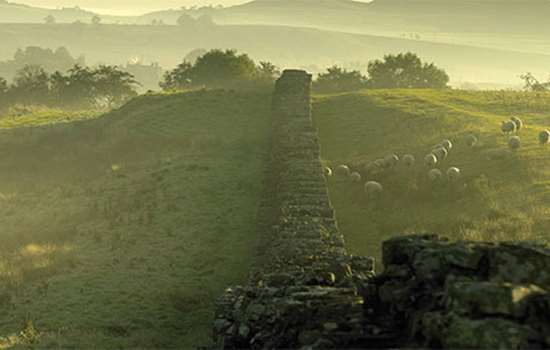
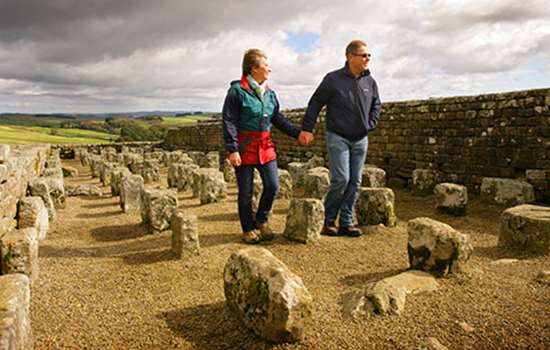
Pack up the car, put the dog in the boot and make more of your visit to Hadrian’s Wall by taking in some of the less well known historic sites along the way. We’ve put together a Housesteads Roman trail for you to try out, including spectacular spots such as Cawfields and Walltown Crags.
Chesters and nearby sites offer a relaxing and tranquil section of Hadrian’s Wall country, located next to the North Tyne River. Six miles from the market town of Hexham, the Chesters Roman Fort area is a picture perfect heritage location on the line of Hadrian’s Wall nestled in the valley of Chollerford next to the North Tyne river. You can also rest your weary legs in Chesters Tearoom.
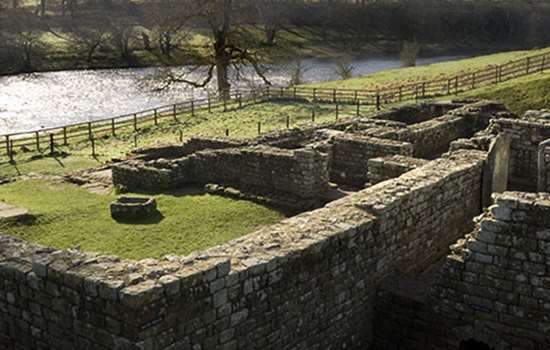
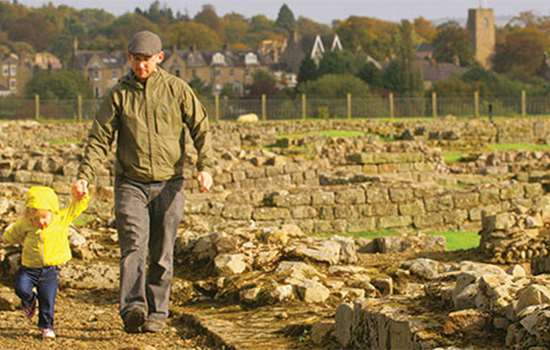
This section of Hadrian’s Wall leaves the countryside and heads into Newcastle-upon-Tyne. The mix of remains in a rural and urban setting makes the eastern section of Hadrian’s Wall a fascinating heritage trail. Starting from Corbridge Roman Town, travel east towards Heddon-on-the-Wall before exploring Newcastle suburbs Denton and Benwell.
For almost 300 years, Hadrian’s Wall was the north-west frontier of an empire that stretched east for 2,500 miles to present-day Iraq, and south for 1,500 miles to the Sahara desert. Built by the Roman army on the orders of the emperor Hadrian after his visit to Britain in AD 122, the Wall was manned by troops from across the Roman empire. It was only finally abandoned as a frontier in the early 5th century when Roman rule in Britain collapsed. But its history doesn’t end there. People have been studying Hadrian’s Wall for over 400 years.
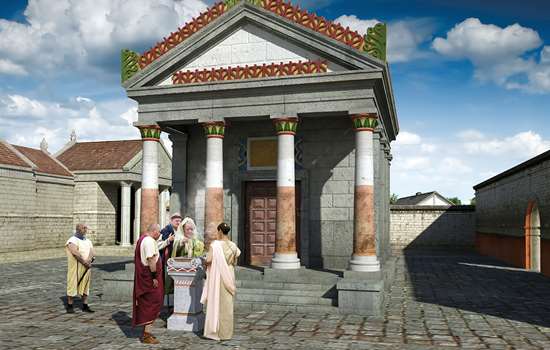

From the fragmentary insights into military life excavated and housed at Housesteads, to the famous Corbridge Hoard, the most important collection of Roman artefacts ever found in the north of Britain, our sites along the Wall are packed full of extraordinary objects. Their museums house statues, armour and exceptional glassware; jewellery, ceramics and votive offerings.
Marvel at a carving of the genii cucullati, hinting at an intriguing cocktail of native and Roman religion bubbling away on the Wall; or imagine the gambling habits of legionaries with the help of the gaming board found at Corbridge.
Hadrian’s Wall is a World Heritage Site, one of 28 places in the United Kingdon granted this status by the United Nations Educational, Scientific and Cultural Organisation (UNESCO) for its outstanding, universal significance. The World Heritage Site spans 150 miles, and includes two National Parks, 11 sites and museums and one million residents. (The site was listed as a World Heritage Site in 1987 the same year as the Great Wall of China was listed.)
Hadrian’s Wall is also included as part of the Frontiers of the Roman Empire World Heritage Site alongside the Upper Raetian Limes and the Antonine Wall. This cluster of monuments is classed as a Serial Transnational World Heritage Site.


